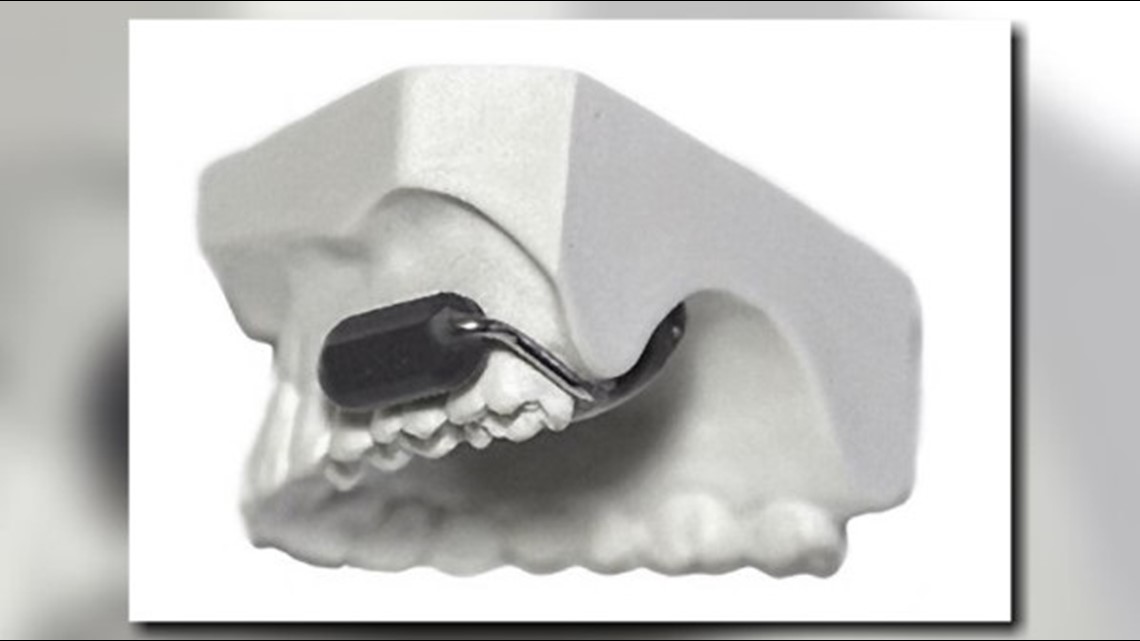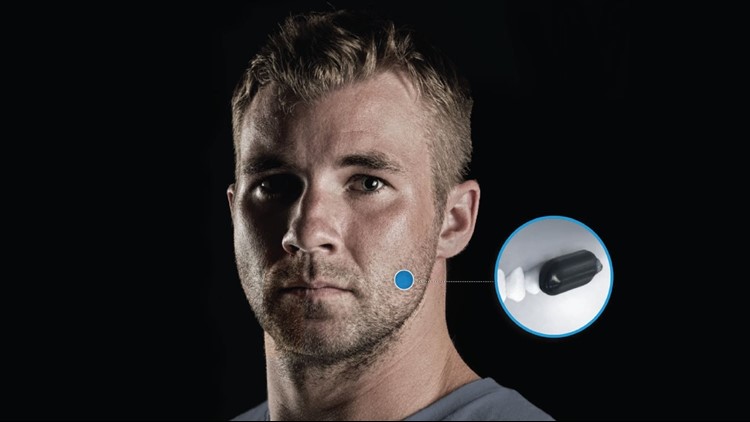A California startup created a device that lets you communicate through your teeth, and the U.S. Department of Defense is interested in outfitting the military with the hands-free tech.
It’s called a Molar Mic.
The company that created it, Sonitus Technologies, said it was just awarded a $10 million contract with the DoD for further development.


One of the biggest draws of the Molar Mic is its ability to allow the user to communicate with others in extreme situations like natural disasters and other events in which clear communication is key.
“You’re hearing it inside your head,” Sonitus Technologies spokesperson Rich Moore said. “It’s two-way -- you’re hearing, and you’re able to speak through that device in your mouth.”
Here’s how it works.
Moore said the device is a tiny microphone and receiver that’s been miniaturized enough to fit inside a user’s mouth. The device is clipped to two of the back teeth and wirelessly connects to a small component around the user’s neck and a controller in his or her hand.


The objective is to enable the person to hear and speak in areas of extreme noise or other conditions, Moore said.
“You can speak very softly, and it’s picked up inside your mouth and transmitted out to your colleagues,” Moore said.
Moore said the technology is near-field magnetic induction, similar to the way smartphones can be used to make a payment by tapping them on a payment machine.
The Molar Mic picks up these signals and makes the user’s tooth vibrate, then the vibration is transmitted through the jawbone creating an auditory pathway straight to the inner ear.
“Our CEO Peter Hadrovic compares it to eating a crunchy food like chips or crackers; how you can hear that clearly inside your head,” Moore said. “It’s a bit like that.”
A recent test of the Molar Mic came after Hurricane Harvey hit Texas in August 2017. Pararescuemen from the Air National Guard's 131st Rescue Squadron out of Mountain View, Calif., used the tech to better communicate between teams during search and rescue missions.
Moore described one case during Hurricane Harvey where a pararescueman was airlifting an injured civilian into a helicopter that was hovering directly overhead. By using the Sonitus device, the rescuer was still able to clearly communicate with the pilot.
“It’s really wild,” Moore said, noting he’s also tested the technology. “This blew me away.”
Through the contract with the DoD and its Defense Innovation Unit, Sonitus has the funding to further the development of the Molar Mic for future widespread use by the U.S. military.
Once the tech is fully cleared for military use, they’ll start looking at commercial applications like use in law enforcement agencies and for first responders.
Get your own wearable bone conduction tech
While the Molar Mic two-way tooth communication device may be new, the science of bone conduction isn’t.
It’s been used in hearing aids, headphones, military communication and scuba diving.
Those looking for an alternative to earbuds can buy wireless headphones that fit around the ear and transmit sound through the upper jawbone. Numerous brands and styles are available on Amazon and can cost as much as $149 for a pair.



